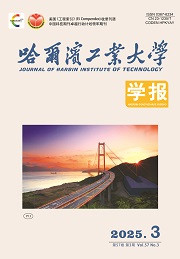| 引用本文: | 刘兴坡,陈心能,卢木子,夏澄非,李永战.降雨输入对青龙河流域HSPF模型模拟结果的影响[J].哈尔滨工业大学学报,2020,52(2):178.DOI:10.11918/201809018 |
| LIU Xingpo,CHEN Xinneng,LU Muzi,XIA Chengfei,LI Yongzhan.Impact of rainfall input on simulation results of HSPF model in Qinglong River Watershed[J].Journal of Harbin Institute of Technology,2020,52(2):178.DOI:10.11918/201809018 |
|
| |
|
|
| 本文已被:浏览 1194次 下载 851次 |

码上扫一扫! |
|
|
| 降雨输入对青龙河流域HSPF模型模拟结果的影响 |
|
刘兴坡1,2,陈心能1,2,卢木子1,2,夏澄非1,2,李永战3
|
|
(1.上海海事大学 海洋科学与工程学院,上海 201306; 2.上海海事大学 海洋环境与生态模拟研究中心, 上海 201306; 3.河北省桃林口水库管理局,河北 秦皇岛 066400)
|
|
| 摘要: |
| 为评价降雨输入对青龙河流域BASINs/HSPF模型模拟结果的影响,改善HSPF模型模拟精度,应用趋势成分建模、周期成分建模、相依随机建模和独立随机建模(白噪声)等随机建模程序和蒙特卡洛计算机模拟方法,获得200组降雨随机模拟序列,分别作为青龙河流域BASINs/HSPF模型的输入,以Nash-Sutcliffe效率系数(ENS)作为模型模拟效果的评价标准,获得如下结论:采用趋势成分、周期成分与ARMA建模以及正态随机模拟获得降雨随机模拟序列是量化降雨输入随机性的可行方法;在模型参数优化的条件下,降雨随机模拟序列HSPF模拟ENS值的变化区间为[71.09%,74.96%],波动幅度达3.87%,表明降雨输入随机性对于HSPF模拟结果具有显著影响;当考虑每年的日降雨量极大值时,ENS值变化区间为[75.35%,78.81%],波动幅度达3.46%,且结果均优于没有考虑降雨极大值点的降雨随机模拟序列,表明降雨时间序列的极大值点对于HSPF模拟效果具有显著影响;随着降雨时间序列中所考虑极大值点数量的逐渐增多,HSPF模拟效果出现下降趋势,表明HSPF模拟应特别关注若干最大极值点的影响;降雨输入的不确定性是HSPF模型模拟结果不确定性的重要来源,改善HSPF模拟效果需要考虑降雨时间序列随机性和极值点因素的影响.本研究可为量化降雨输入对HSPF模型模拟的影响以及HSPF模拟的降雨情景优选提供借鉴. |
| 关键词: 青龙河流域 BASINs/HSPF模型 降雨时间序列 随机模拟 不确定性分析 |
| DOI:10.11918/201809018 |
| 分类号:X522 |
| 文献标识码:A |
| 基金项目:城市水资源与水环境国家重点实验室开放课题(ES201104);国家自然科学基金(51008191) |
|
| Impact of rainfall input on simulation results of HSPF model in Qinglong River Watershed |
|
LIU Xingpo1,2,CHEN Xinneng1,2,LU Muzi1,2,XIA Chengfei1,2,LI Yongzhan3
|
|
(1.College of Ocean Science and Engineering, Shanghai Maritime University, Shanghai 201306, China; 2.Center for Marine Environmental and Ecological Modelling, Shanghai Maritime University, Shanghai 201306, China; 3.Taolinkou Reservoir Administration, Qinhuangdao 066400, Hebei, China)
|
| Abstract: |
| In order to evaluate the impact of rainfall input on the simulation results of BASINs/HSPF model in Qinglong River Watershed and improve its simulation accuracy, 200 sets of rainfall simulation series were obtained using random modeling procedures such as trend component modeling, periodic component modeling, dependent random component modeling, and independent random modeling (white noise) procedures, as well as the Monte Carlo simulation method. The Nash-Sutcliffe efficiency coefficient (ENS) was taken as the evaluation criterion of the model simulation, and the following conclusions were drawn: 1) Using trend component, periodic component, ARMA modeling, and normal random simulation to obtain rainfall stochastic simulation series is a suitable method for the quantification of randomness of rainfall input. 2) Under the condition of model parameter optimization, the variation range of ENS value of HSPF simulation was [71.09%, 74.96%], and the fluctuation range was 3.87%, suggesting that the randomness of rainfall input had a significant impact on the HSPF simulation results. 3) When considering the annual daily rainfall extremes, the variation range of ENS value was [75.35%, 78.81%], the fluctuation range was 3.46%, and the results were better than those of the stochastic simulation series which ignored the daily rainfall extremes. It revealed that the extremes of rainfall time series had a significant impact on HSPF simulation results. 4) With the increasing number of extremes considered in the simulated rainfall time series, the HSPF simulation results showed a downward trend, indicating that more attention should be paid to the impact of some critical extremes. 5) The uncertainty of rainfall input is a crucial source of the uncertainty of HSPF simulation results, so randomness and extremes of rainfall time series should be taken into consideration to improve the simulation effects of HSPF. This study provides reference for quantifying the impact of rainfall input on HSPF model simulation and optimizing rainfall scenarios for HSPF simulation. |
| Key words: Qinglong River Watershed BASINs/HSPF model rainfall time series stochastic simulation uncertainty analysis |
|
|
|
|







